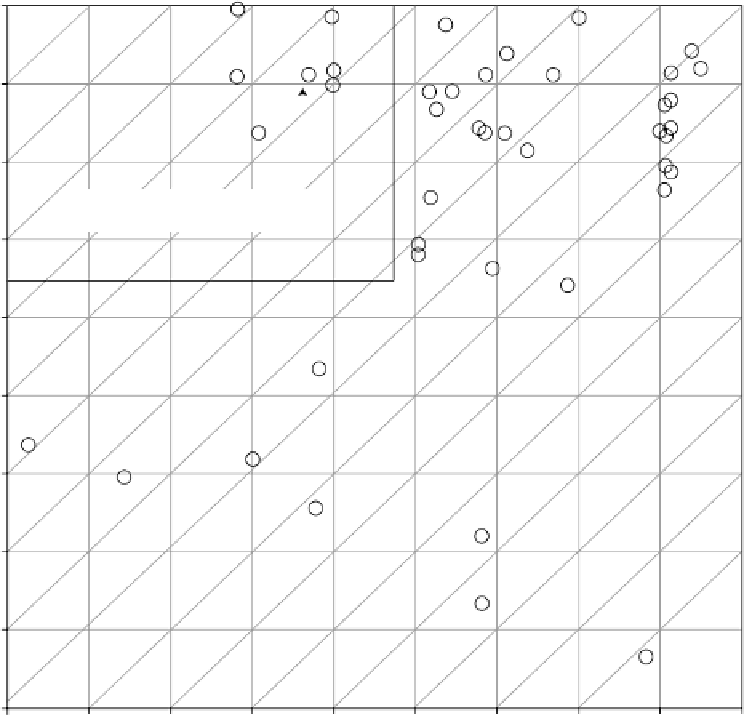Environmental Engineering Reference
In-Depth Information
1
Isopentane
DCM
Propylene oxide
1, 2-butylene oxide
Isoprene
acetonitrile
Methyl
chloroform
EA
1,3-dioxolane
10
-1
Cyclohexane
IA
TEA
MEK
TCE
Methanol
1,4-dioxane
TBA
SBA
2M3B
Nitromethane
NMM
Carbon
tetrachloride
Nitroethane
Tert amyl alcohol
10
-2
Perchloroethylene
Epichlorohydrin
1,3,5-trioxane
Diepoxybutane
Glycido
Butoxymethyl oxirane
Ethanol
Appromimate range in which soil-gas
surveys are feasible
Diisopropylamine
10
-3
Styrene oxide
Phenol
Trichloroacetic acid
10
-4
Thymol
10
-5
2,6-di-
tert
-butyl-
p
-cresol
p
-
tert
-amyl pheonol
10
-6
Nonylphenol
1-naphthol
Resorcinol
10
-7
Hydroquinone
10
-8
Triethanolamine
10
-9
10
-3
10
-2
10
-1
1
10
1
Aqueous solubility (mmol/L)
10
2
10
3
10
4
10
5
10
6
FIGURE 3.4
Plot of vapor pressure versus aqueous solubility for chlorinated solvents and solvent-stabilizer
compounds. Diagonal lines represent Henry's law constant equivalents, increasing to the upper left.
and theoretical considerations related to biodegradation. Chapter 7 further assesses various studies
related to the possibility of i eld application of bioremediation as a technology to carry sites toward
closure. Although there is some overlap between these two chapters, Chapter 3 primarily addresses
the theoretical approaches, and Chapter 7, the applied approaches.
The ability of an organic compound to persist in soil and groundwater is inversely related to the
potential for indigenous microl ora to dissimilate it (White et al., 1996). Biodegradation refers to the
general ability of indigenous soil microbes or fungi to acclimate to and metabolize a contaminant
under ambient temperature conditions through microbially induced structural transformation of the
parent compound that changes its molecular integrity. Complete or ultimate biodegradation con-
verts a compound to carbon dioxide and water (“mineralization”), whereas acceptable biodegrada-
tion is microbial transformation that results in reduced toxicity (Scow, 1982). Microbes can adjust
their metabolism to degrade most anthropogenic organic compounds by induction of enzymes, by
selecting new metabolic capabilities produced by genetic changes, or by increasing their population
(Chappelle, 1993). Although fungi do not increase their population in response to introduction of a
contaminant, some can use the contaminant as their sole carbon source.
The term “biodegradable” is qualii ed by the conditions under which biodegradation occurs.
Biodegradable or nonbiodegradable are commonly used terms to indicate whether a compound will be

Search WWH ::

Custom Search